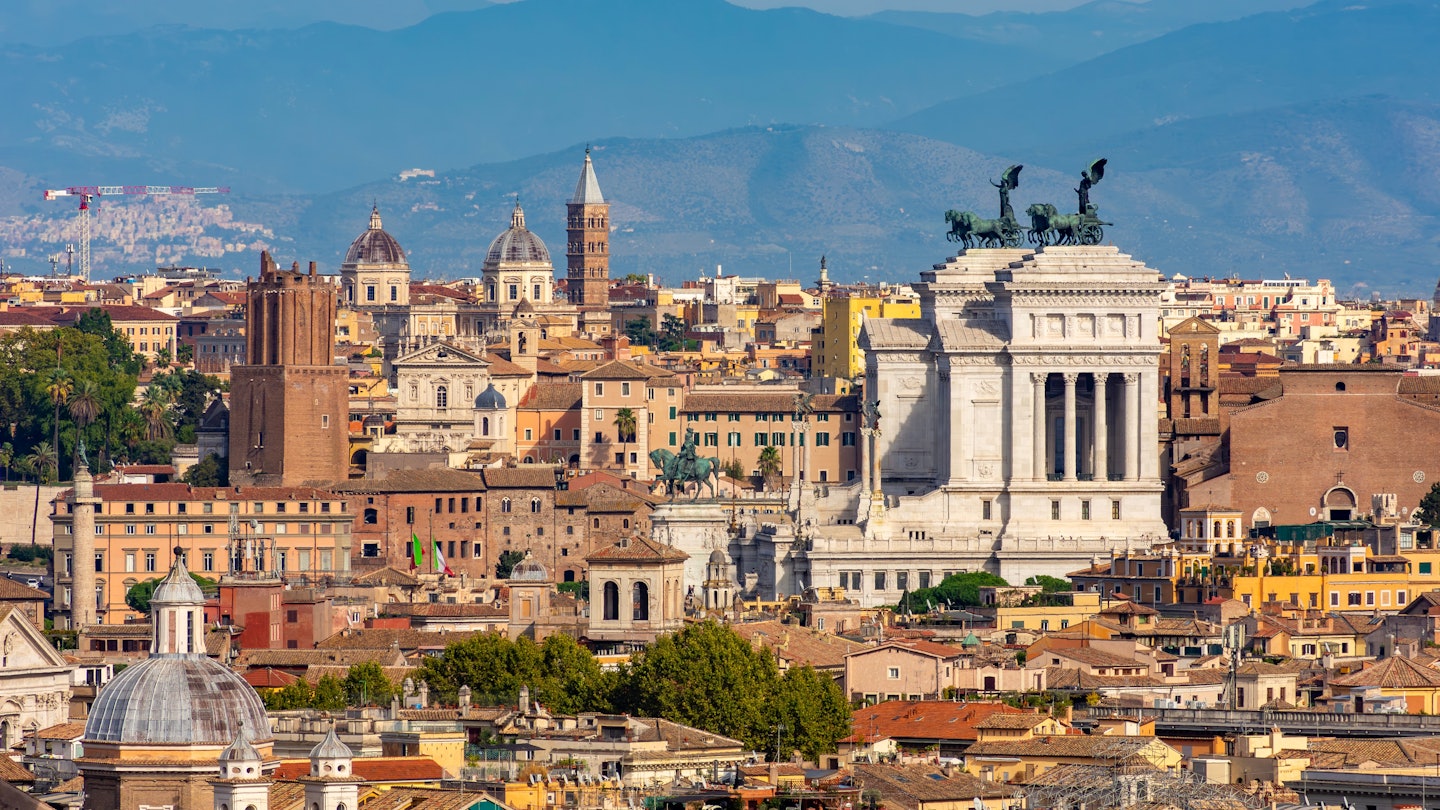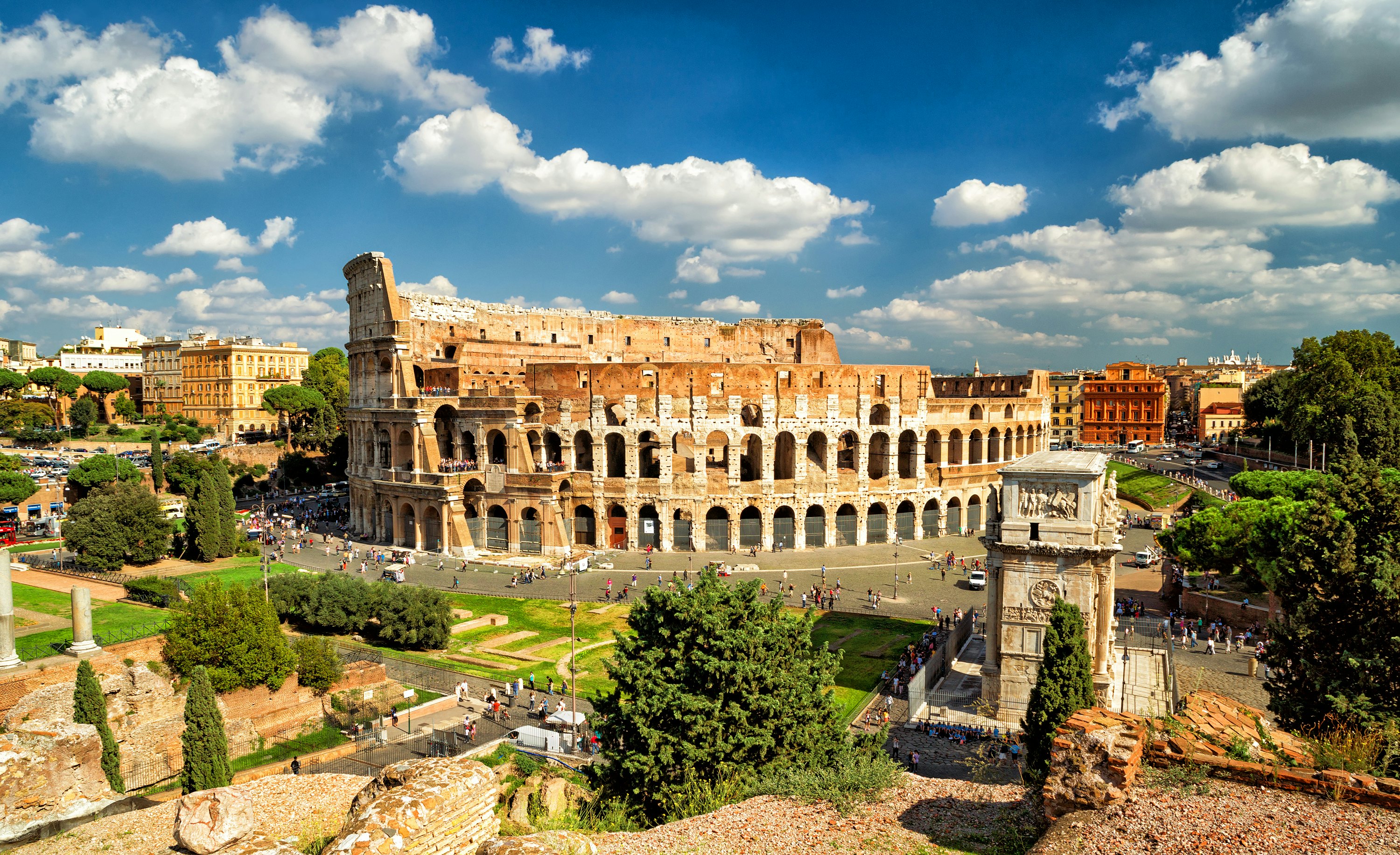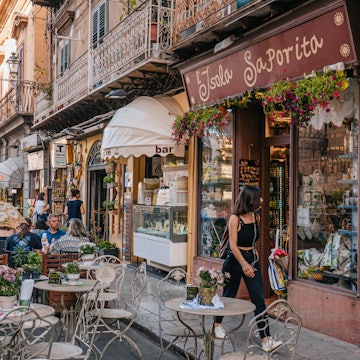

Rome skyline. Mistervlad/Shutterstock
Rome sort of sits in the middle of the pack when it comes to affordability. While it is not the most expensive European or even Italian city – Paris or London will hit your wallet much harder – it’s also not a bargain destination. Sticking to your personal budget in Rome takes careful planning so you can allocate your spend where it matters most.
Inflation has done a number on the Eternal City in the last couple of years, but it is still possible to fully experience Rome without spending a fortune. If you are looking for affordable tips to enjoy your stay in Rome, make sure to listen to locals and do some research beforehand. Prices largely vary from one neighborhood to the other, but also from one establishment to the next; a carbonara, Rome’s signature pasta dish, can reasonably cost anywhere from €9 to €13 (US$10.20 to US$14.74), depending on the establishment. However, you can easily find the dish for as much as €25 (US$28.34) in a fancier restaurant or simply by a major landmark; it doesn’t mean that the quality of the produce is better, just that you entered a Vatican-adjacent tourist trap.

The key to an affordable time in Rome is in keeping an eye out for deals and researching where to find them. Below are some tips to have a wonderful Roman holiday on a budget.
Daily costs in Rome
Hostel room far from the city center: €25 ($30)
Hotel room in the city center: from €70 ($80)
One-day Metro pass (unlimited rides): €7 ($8)
Espresso in historic cafe: €2.50 ($3)
Sandwich in the city center: €8 ($10)
Signature Roman pasta dish: €11 ($13)
Take the train from the airport
Your journey to spending less in Rome begins with how to get there. A taxi from Fiumicino Airport to the city center costs €55 (US$62.35), but you can save a lot by taking a train to any of the many stations in Rome. A train ticket from Fiumicino Airport to Roma Trastevere costs €8 (US$9.07) and takes roughly the same time, if not less, given Rome’s traffic. Purchase your train ticket on Trenitalia’s website.

Visit free museums on the first Sunday of the month
On the first Sunday of every month, all public museums are free to all visitors. If you’ll be in Rome the first week of the month, take advantage and plan accordingly. The list of participating museums includes some of the city’s most important museums, such as the Capitoline Museums and the Colosseum Archaeological Park.
Eat local and save up
Sidestep global fast-food chains, save money and support small businesses by choosing a Roman casual eatery. Allow yourself to be surprised by Donkey Punch’s heavenly sandwiches in Trastevere, and if you are craving the comforts of home, check out California Cookhouse (Pigneto, San Paolo, Mazzini, Monte Sacro neighborhoods), or Twist & Chips in San Lorenzo.
Check if you are eligible for discounts
Do your due diligence and always check a museum’s ticket information to understand whether you may be eligible for any age-based or nationality-based discounts. The physical ticket office may have some info displayed, but the official website will generally have more information. European Union citizens often get discounts; children usually get in for free, and so do those aged under 18, while students under 25, and people over 60 often get discounted rates.

Book on official sites and avoid third-party vendors
For any attractions, make sure to reserve tickets on their official website – in advance, if possible. If not, your best bet is to brave the line at the official ticket office; do not give in to people inviting you to skip the line by booking tickets through their service: you’re likely to be overcharged.
Get free entry to museums and transportation with Roma Card
If you plan to visit a lot of museums and attractions, consider investing in a Roma Pass Card, a bundled ticket option that lets you visit one or two museums and attractions, provides discounted rates for others and also serves as a metro/bus card. Roma Capitale has both 48-hour and 72-hour passes available.
Walk around or get a public transport pass
Rome’s city center doubles as an open-air museum and it’s worth exploring it on foot. If you can’t, make use of Rome’s public transportation system rather than renting a car or scooter, which is much more expensive than you think. A 100-minute bus ticket is €1.50 (US$1.70), and you can also invest in a 24-hour pass for €7 (US$7.93), a 48-hour pass for €12.50 (US$14.17), and so forth. Purchase a pass here.

Drink your coffee at the counter
From your breakfast cappuccino to your afternoon espresso, drinking coffee at the counter is always cheaper in Rome. You may incur a service fee if you sit down at a cafe, which is perfectly fine if you want to lounge and enjoy a slow breakfast, but superfluous if you’re in a hurry (and on a budget!).
Take advantage of aperitivo deals
Many cafes and bars have an aperitivo formula. Usually from 6pm to 8pm, they’ll serve a drink of your choice and snacks for the price of the drink. The deal varies from an establishment to another, but essentially, you get free food with your drink. Meccanismo, a staple in Trastevere, has a convenient formula, where you receive a platter with cold and warm finger food with your drink for €13 (US$14.74).
Save up with a reusable water bottle
Rome has thousands of drinking water fountains called nasoni, which locals use every day. Be good to your wallet and the environment by bringing your own bottle. The Acquea app (created by the public water service ACEA) marks all drinking fountains in the city of Rome.

Cook in your B&B
Supermarkets in Italy have good-quality produce and excellent deals. While eating in restaurants is undeniably enticing, if you are trying to spend less on your Roman holiday opt for an accommodation with a kitchen so you can cook at home. You’re guaranteed to save a fortune by preparing your own food and you won’t be disappointed with the city’s delicious bread, cheese and vegetables.
Shop at flea markets
Rome has a few historic flea markets. Porta Portese, located in the central Trastevere district, is one of the oldest. Nowadays, half their stands sell second-hand (including vintage) items, and the other half brand-new ones for accessible prices, from apparel to furniture to gizmos and knick-knacks of all kinds. Porta Portese is only open on Sunday – and most stands are so convenient that people bring empty luggage to carry their finds.
















